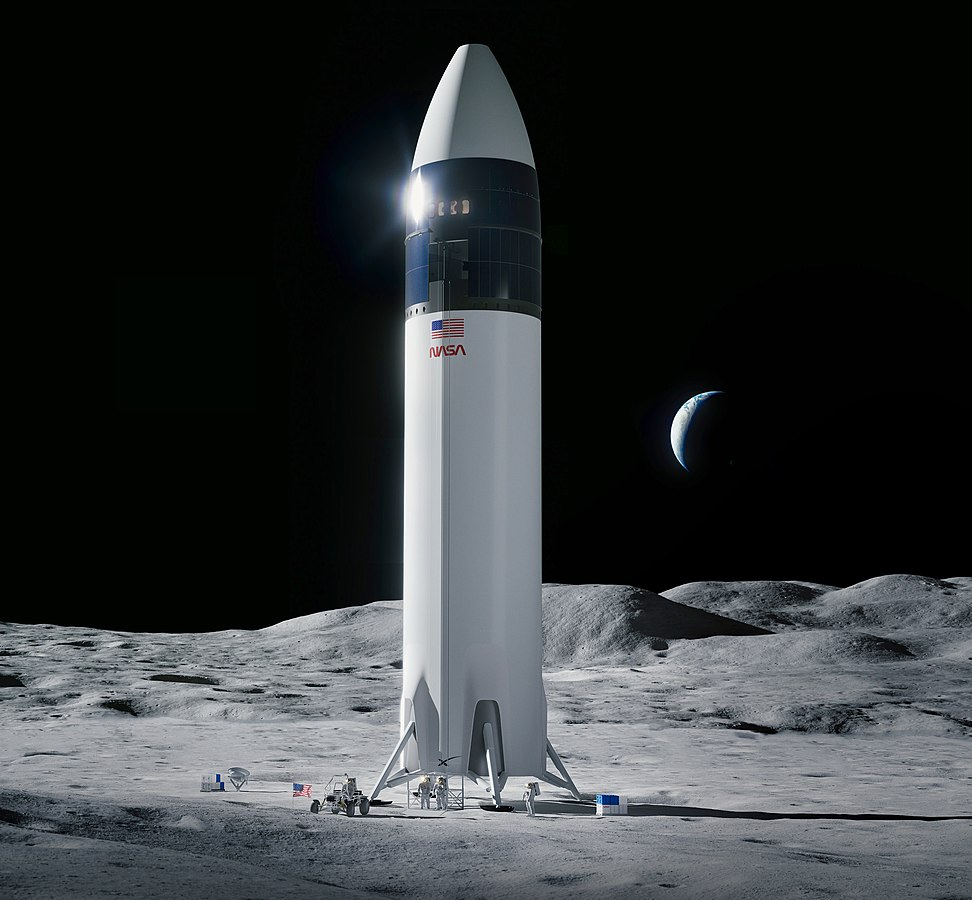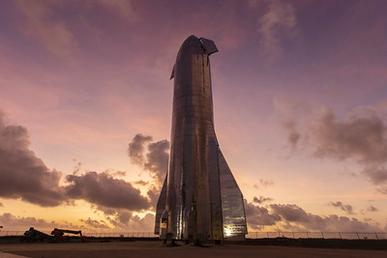The History of Starship, Part 2
- starshipsls

- Jun 25, 2021
- 3 min read
Updated: Jun 28, 2021
Design #10: Starship
In March 2019, SpaceX decided to change the material from carbon fiber to 301 stainless steel.
Design #11: Starship
In May 2019, SpaceX decided to use three sea level Raptors and three vacuum Raptors on the upper stage. The Mk1 prototype was a prototype of this. This design had six landing legs on both stages. Also, Super Heavy would have 37 engines.

Credit: NSF member Lamontagne

Credit: SpaceX
Design #12: Starship
In March 2020, Elon Musk announced that a propellant depot version was planned that would refuel Starship in orbit. That same year, the Starship HLS was announced and started competing with two other landers for NASA's Artemis program of returning people to the moon. In September 2020, Musk announced that Super Heavy would now only use 28 engines. It would now take 150 tonnes to space.

Credit: SpaceX
Design #13: Starship
In 2021, Elon Musk tweeted further changes to Starship. Super Heavy would now have 29 engines at first, but 32 engines later. In addition to that, the thrust of the Raptors would be increased. The payload capacity was also increased to about 200 tonnes. In April, SpaceX won the Human Landing System contract for Artemis. The same day, SpaceX revealed a new design for the Starship HLS.

Credit: Steve Jurvetson, CC BY-SA 4.0, via Wikimedia Commons
"You want to wake up in the morning and think the future is going to be great - and that’s what being a spacefaring civilization is all about. It’s about believing in the future and thinking that the future will be better than the past. And I can’t think of anything more exciting than going out there and being among the stars."
- Elon Musk
The Starships
Starhopper: In 2019, SpaceX started construction of Starhopper, a small prototype vehicle that did short hops. It had a static fire/short hop, 1m hop, 20m hop, and a 150m hop.

Credit: NSF member Nomadd
Mk1: In September 2019, Elon Musk revealed the first Starship, named Mk1. In November 2019, it partly came apart in a pressure test.

Credit: SpaceX
MK2 and Mk4: Mk2 and Mk4 were both Starships being built at Kennedy Space Center. Both were canceled and scrapped.
Mk3/SN1: Mk3 was renamed SN1 by Elon Musk. In early 2020, it came came apart in a pressure test.
SN8: Starship SN8 flew in December 2020. It exploded on landing because of low pressure in one of the fuel tanks.
SN9: Starship SN9 flew in February 2021. It exploded on landing because an engine failed to reignite.
SN10: Starship SN10 was the first Starship to land. Unfortunately, it exploded 6-8 min. later.
SN11: Starship SN11 exploded shortly before landing.
SN12-14: Starships SN12-14 were canceled. The SN12 nosecone was used in a test article.
SN15: Starship SN15 was the first Starship to not explode.

Credit: Steve Jurvetson, CC BY 2.0 <https://creativecommons.org/licenses/by/2.0>, via Wikimedia Commons
SN17-19: Canceled
Future Plans
* SN16 may do a hypersonic test flight.
* Booster 3 will have ground tests.
* Booster 4 and SN20 will do the orbital test flight no earlier than July, most likely August or later.
* SpaceX plans to have a Super Heavy fly with 32 engines before the end of the year.
* SpaceX may do a lunar test flight of Starship in 2022.
* NASA and SpaceX plan to do a propellant transfer test by the end of 2022.
* SpaceX plans to fly 10-12 people around the moon on the dearmoon mission.
* SpaceX plans to do a test flight of Starship HLS in 2023, and crewed landing NET 2024.
* SpaceX plans to fly an uncrewed flight to Mars in 2024, and crewed in 2026.
_edited_edited.jpg)




Thanks for this post! I somehow missed the information that they now plan to use booster 4 with SN20, where/when did you find this?